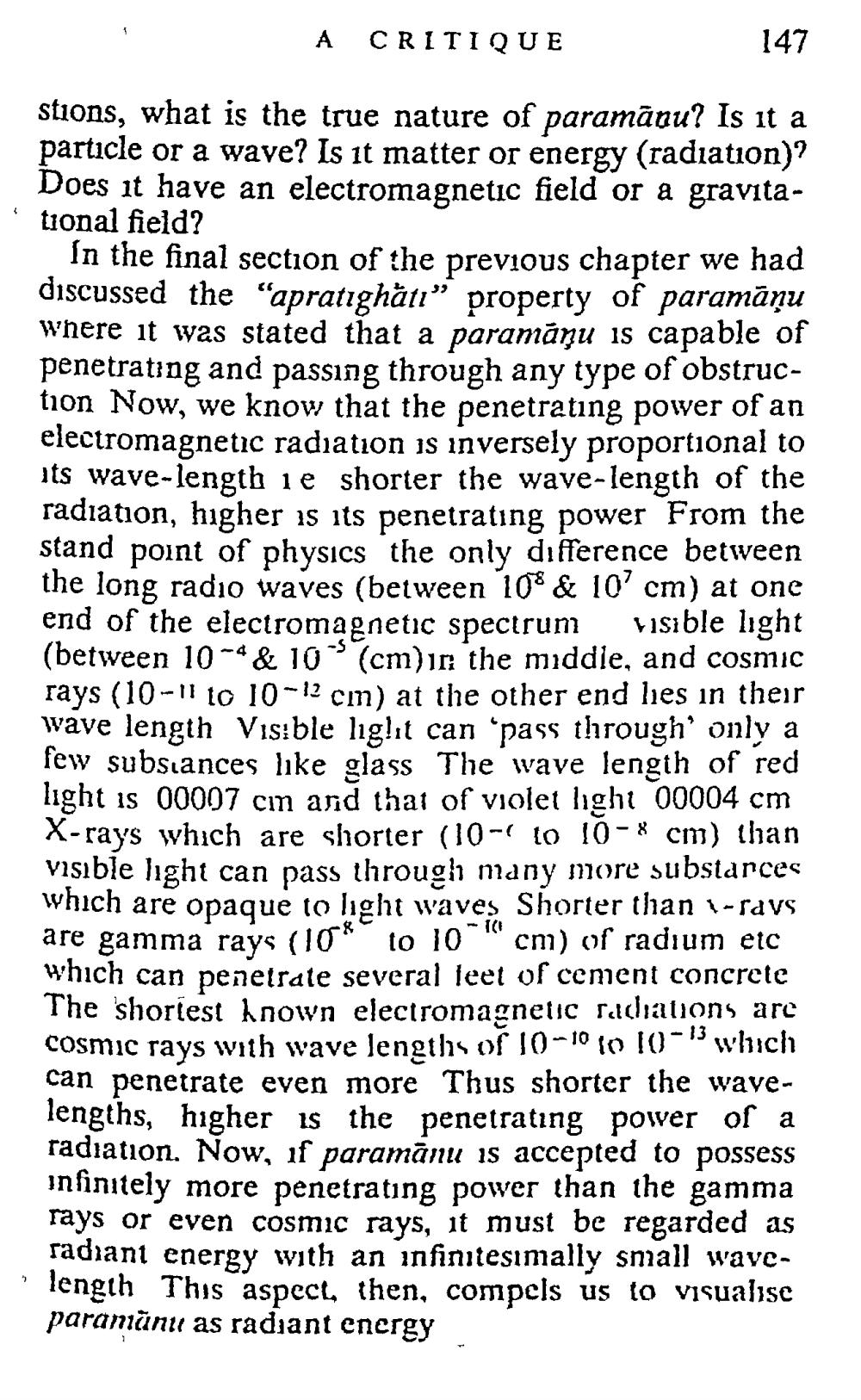________________
A CRITIQUE
147
stions, what is the true nature of paramãou? Is it a particle or a wave? Is it matter or energy (radiation)? Does it have an electromagnetic field or a gravitational field?
In the final section of the previous chapter we had discussed the "apratighäti" property of paramāņu where it was stated that a paramāņu is capable of penetrating and passing through any type of obstruction Now, we know that the penetrating power of an electromagnetic radiation is inversely proportional to its wave-length ie shorter the wave-length of the radiation, higher is its penetrating power From the stand point of physics the only difference between the long radio waves (between 108 & 10 cm) at one end of the electromagnetic spectrum visible light (between 10-4 & 10" (cm)in the middle, and cosmic rays (10-11 to 10-12 cin) at the other end lies in their wave length Visible lig!ıt can pass through only a few subsiances like glass The wave length of red light is 00007 cim and that of violet lighi 00004 cm X-rays which are shorter (10- to 10-8 cm) than visible light can pass through many more substarces which are opaque to light waves Shorter than i-savs are gamma rays (10 to 10""cm) of radium etc which can penetrate several leet of cement concrete The shortest hnown electromagnetic radiations are cosmic rays with wave lengths of 10-10 10 10-" wlrich can penetrate even more Thus shorter the wavelengths, higher is the penetrating power of a radiation. Now, if paramānu is accepted to possess infinitely more penetrating power than the gamma rays or even cosmic rays, it must be regarded as radiant energy with an infinitesimally small wavelength This aspech, then, compels us to visualise paramūnu as radiant energy




